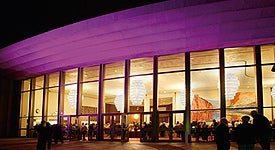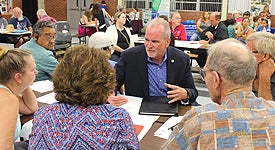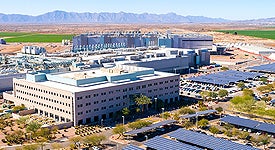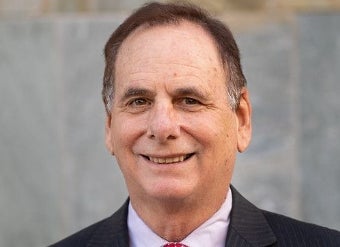Outdoor fireworks displays, use of pyrotechnics before a proximate audience and pyrotechnic special effects in motion picture, television, theatrical and group entertainment productions shall comply with the Fire Code and NFPA 1123 or NFPA 1126.
- Fireworks. Any composition or device for the purpose of producing a visible or an audible effect for entertainment purposes by combustion, deflagration or detonation that meets the definition of 1.4G fireworks or 1.3G fireworks as set forth herein.
- Fireworks, 1.4G.
- Small fireworks devices containing restricted amounts of pyrotechnic composition designed primarily to produce visible or audible effects by combustion. Such 1.4G fireworks which comply with the construction, chemical composition and labeling regulations of the DOTn for Fireworks, UN 0336, and the U.S. Consumer Product Safety Commission as set forth in CPSC 16 CFR Parts 1500 and 1507, are not explosive materials for the purpose of this code.
- Small fireworks devices containing restricted amounts of pyrotechnic composition designed primarily to produce visible or audible effects by combustion. Such 1.4G fireworks which comply with the construction, chemical composition and labeling regulations of the DOTn for Fireworks, UN 0336, and the U.S. Consumer Product Safety Commission as set forth in CPSC 16 CFR Parts 1500 and 1507, are not explosive materials for the purpose of this code.
- Fireworks, 1.3G.
- Large fireworks devices, which are explosive materials, intended for use in fireworks displays and designed to produce audible or visible effects by combustion, deflagration or detonation. Such 1.3G fireworks include, but are not limited to, firecrackers containing more than 130 milligrams (2 grains) of explosive composition, aerial shells containing more than 40 grams of pyrotechnic composition and other display pieces which exceed the limits for classification as 1.4G fireworks. Such 1.3G fireworks are also described as Fireworks, UN 0335 by the DOTn.
- Large fireworks devices, which are explosive materials, intended for use in fireworks displays and designed to produce audible or visible effects by combustion, deflagration or detonation. Such 1.3G fireworks include, but are not limited to, firecrackers containing more than 130 milligrams (2 grains) of explosive composition, aerial shells containing more than 40 grams of pyrotechnic composition and other display pieces which exceed the limits for classification as 1.4G fireworks. Such 1.3G fireworks are also described as Fireworks, UN 0335 by the DOTn.
- Fireworks, 1.4G.
- Fireworks Display. A presentation of fireworks for a public or private gathering.
- Proximate Audience. An audience closer to pyrotechnic devices than allowed by NFPA 1123.
- All permits and associated documents must be submitted to Chandler Fire prior to the shoot.
- A site inspection will be conducted the day of the shoot.
- At the discretion of the Chandler Fire Department the shoot may be cancelled due to unsafe conditions.
- A plan establishing procedures to follow and actions to be taken in the event that a shell fails to ignite in, or discharge from, a mortar or fails to function over the fallout area or other malfunctions shall be provided to the fire code official and updated when changes are made to the plan.
- Outdoor Fireworks Display. A detailed site plan shall include the dimensions of the discharge site, spectator viewing area, parking areas, buildings, roadways, trees, utilities, other overhead obstructions within 1500’ of points of discharge and the fallout area and the associated separation distances and the spectator restraint line. (The more detail the better).
- Use of Pyrotechnics before a Proximate Audience. Applications for use of pyrotechnics before a proximate audience shall include plans indicating the required clearances for spectators and combustibles, crowd control measures, smoke control measures and requirements for standby personnel and equipment when provision of such personnel or equipment is required by the fire code official.
- Provide written permission from Owner of the Property or authorized representative to hold event on the property. City property NOTARIZED Hold Harmless agreement required.
- Certificate of insurance.
- Provide a Certificate of Fitness card or documentation of adequate training by another jurisdiction.
- List of materials to be used for the display (types, number and sizes of aerial shells and pyrotechnic materials).
- City of Chandler Fire Department General Application, Fireworks Personnel Form and all required documentation.
- A competent operator with a valid certificate of fitness card, issued by the Phoenix Fire Department, or documentation of adequate training issued by another jurisdiction, subject to approval or disapproval of the Chandler Fire Department, is required for each display.
- The operator shall be at least 21 years old.
- A person of proven experience shall supervise the handling and use of fireworks and pyrotechnics.
- All assistants shall be trained in the duties they are to perform, be under the direct supervision of the operator, and shall be at least 18 years old.
- No person suspected of being under the influence of intoxicants or narcotics shall handle fireworks in any manner or be on site with the fireworks.
- All personnel on site shall complete City of Chandler Fire Department Fireworks Personnel Form
- Minimum coverage certificate of insurance shall furnish as follows:
- a. Commercial General Liability
- b. Per Occurrence $1,000,000
- c. Aggregate $2,000,000
- The City of Chandler, its agents, representatives, officers, directors, officials and employees shall be named as an Additional Insured, and each certificate shall contain a “Waiver of Subrogation, and Severability of Interest or Separation of Insured clause.”
- Only required if the display is to be held on City of Chandler property, a Hold Harmless Agreement shall be completed and NOTARIZED and a bond shall be required in the principal amount not less than five hundred dollars ($500.00), conditioned upon payment of all damages which may be caused to persons or property by reason of the display. (A.R.S. Section 36-1604) This bond shall be placed on deposit with the City Clerk.
- Approved fireworks displays shall include only the approved fireworks 1.3G, fireworks 1.4G, fireworks 1.4S and pyrotechnic articles, 1.4G, which shall be handled by an approved, competent operator.
- The approved fireworks shall be arranged, located, discharged and fired in a manner that will not pose a hazard to property or endanger any person.
- Clearance
- Spectators, spectator parking areas, and dwellings, buildings or structures shall not be located within the display site.
Exceptions- 1. This provision shall not apply to pyrotechnic special effects and fireworks displays using Division 1.4G materials before a proximate audience in accordance with NFPA 1126.
- 2. This provision shall not apply to unoccupied dwellings, buildings and structures with the approval of the building owner and the fire code official.
- Spectators, spectator parking areas, and dwellings, buildings or structures shall not be located within the display site.
- Storage
- Beginning as soon as fireworks have been delivered to the display site, they shall not be left unattended.
- Fireworks shall be kept dry after delivery to the display site.
- Shells shall be inspected by the operator or assistants after delivery to the display site. Shells having tears, leaks, broken fuses or signs of having been wet shall be set aside and shall not be fired. Aerial shells shall be checked for proper fit in mortars prior to discharge. Aerial shells that do not fit properly shall not be fired. After the fireworks display, damaged, deteriorated or dud shells shall either be returned to the supplier or destroyed in accordance with the supplier’s instructions and the Fire Code. Exception: Minor repairs to fuses shall be allowed. For electrically ignited displays, attachment of electric matches and similar tasks shall be allowed.
- After delivery to the display site and prior to the fireworks display, all shells shall be separated according to size and their designation as salutes. Exception: For electrically fired displays, or displays where all shells are loaded into mortars prior to the show, there is no requirement for separation of shells according to size or their designation as salutes.
- Display fireworks, 1.3G, that will be temporarily stored at the site during the fireworks display shall be stored in ready boxes located upwind and at least 25 feet from the mortar placement and separated according to size and their designation as salutes. Exception: For electrically fired fireworks displays, or fireworks displays where all shells are loaded into mortars prior to the show, there is no requirement for separation of shells according to size, their designation as salutes or for the use of ready boxes.
- Mortars for firing fireworks shells shall be installed in accordance with NFPA 1123 and shall be positioned so that shells are propelled away from spectators and over the fallout area. Under no circumstances shall mortars be angled toward the spectator viewing area. Prior to placement, mortars shall be inspected for defects, such as dents, bent ends, damaged interiors and damaged plugs. Defective mortars shall not be used.
- Beginning as soon as fireworks have been delivered to the display site, they shall not be left unattended.
- Post-Fireworks Display Inspection
- After the fireworks display, the firing crew shall conduct an inspection of the fallout area for the purpose of locating unexploded aerial shells or live components. This inspection shall be conducted before public access to the site shall be allowed. Where fireworks are displayed at night and it is not possible to inspect the site thoroughly, the operator or designated assistant shall inspect the entire site at first light.
- A report identifying any shells that fail to ignite in, or discharge from, a mortar or fail to function over the fallout area or otherwise malfunction, shall be filed with the fire code official.
- Any shells found during the inspection shall not be handled until at least 15 minutes have elapsed from the time the shells were fired. The fireworks shall then be doused with water and allowed to remain for at least 5 additional minutes before being placed in a plastic bucket or fiberboard box. The disposal instructions of the manufacturer as provided by the fireworks supplier shall then be followed in disposing of the fireworks in accordance with the Fire code.
- After the fireworks display, the firing crew shall conduct an inspection of the fallout area for the purpose of locating unexploded aerial shells or live components. This inspection shall be conducted before public access to the site shall be allowed. Where fireworks are displayed at night and it is not possible to inspect the site thoroughly, the operator or designated assistant shall inspect the entire site at first light.
- Clearance
- Aerial shells shall be carried to mortars by the shell body. For the purpose of loading mortars, aerial shells shall be held by the thick portion of the fuse and carefully loaded into mortars.
- Whenever in the opinion of the fire code official or the operator a hazardous condition exists, the fireworks display shall be discontinued immediately until such time as the dangerous situation is corrected.
- If a vendor or event may seriously impact public safety, the City Fire or Police Department has the authority to immediately cause that activity to stop. If necessary the vendor/entertainer will be directed to leave the venue. In these rare cases, the City Fire or Police Department will immediately notify the responsible party of the name of the vendor/entertainer and the reason for the cease and desist action.
- If the city reasonably determines in its sole discretion that the use to which the event will or likely to create a dangerous or unsafe condition, or will or is likely to condition improper, incendiary or dangerous to the public health, safety or morals, or will or is likely to endanger or deteriorate the event or any part thereof by fire, water or other means of any nature, or if the responsible party violates any of the provisions hereof, then and in that event the responsible party agree that this agreement may be summarily cancelled by the city without any advanced notice whatsoever to the responsible party. In the event of cancellation of this agreement, the responsible party understands and agrees that no liability whatsoever shall attach to the city by reason of such cancellation.



